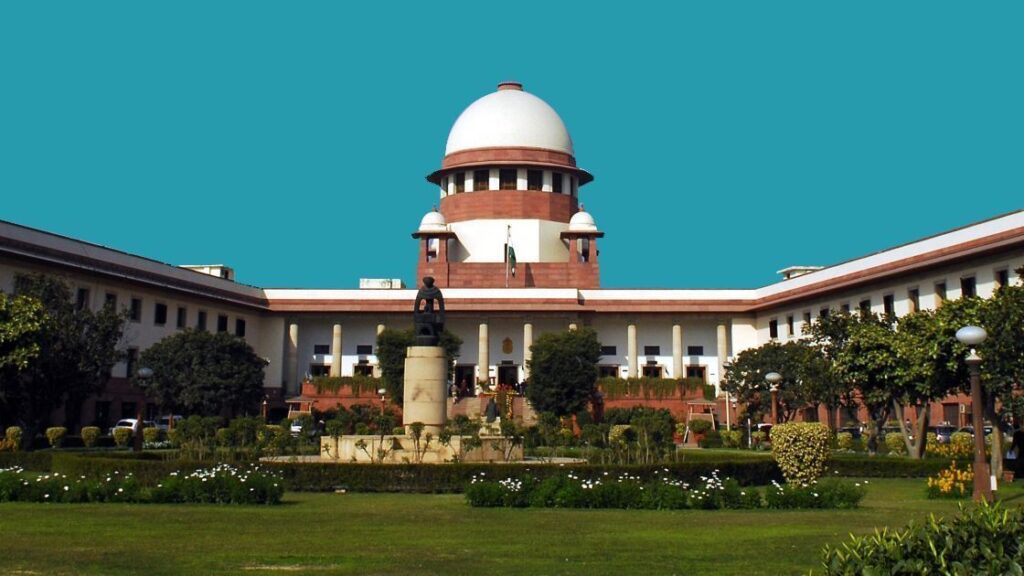
A Cold War Between The Executive And The Judiciary
Last Updated on July 11, 2024 by Administrator
Updated on February 02, 2023 at 19:21What is the scuffle between the two bodies about?
Recently, during a parliamentary discussion on the bill on salaries for Supreme Court and High court judges, Union Law Minister Kiren Rijju suggested that there was a growing voice amongst the SC Bar Association for the reintroduction of the National Judicial Appointments Commission (NJAC) to replace the current collegium system. Furthermore, the minister remarked that the collegium system of appointments was opaque and needed to be reconsidered as it is unconstitutional.
This incident reignited the years-old debate about the appointment of the judiciary through the collegium system allegedly not justifying the intent with which the provision was incorporated in the constitution.
What is the Collegium System?
Herein, the Chief Justice of India and four senior-most Supreme Court judges recommend appointments and transfers of judges. Meanwhile, a High Court Collegium is led by the incumbent Chief Justice and the two senior-most judges of that court. This system was not laid down in the Constitution but it ensured more judicial independence than the NJAC system and has been developed through judicial precedents over a period of time.
What are the grounds on which this system is being criticised?
- Lack of transparency
- Lack of structure- It is a closed-door affair with no particular procedure prescribed in any statute, thus, it lacks structure.
- Lack of Diversity- This system constitutes only the judicial officers and there is no representation of other organs of the state.
- It has also been argued that other nations like the US, UK, etc. have also included the executive and the legislature in the process of appointment of judges without hampering their judicial independence, thus, implying that such a system could be adopted by India as well.
What is the NJAC?
National Judicial Appointments Commission or the NJAC constituted of the following:
- The Chief Justice of India
- The two senior-most judges of the Supreme Court
- The Union Law Minister
- Two ‘eminent persons’.( to be nominated by the chief justice, the PM and the leader of the opposition, out of which one had to be from the Backward Caste)
The NJAC Act regulated this commission.
Why was the NJAC under scrutiny?
- The judicial members of the NJAC did not have a majority in terms of numbers as they accounted for three out of the six members. Furthermore, as per section 5 of the NJAC Act, if any two members disagreed with a particular recommendation, then that would work as a veto against the recommendation – this meant that the Executive could block an appointment of a judge with the votes of the Law Minister and anyone ’eminent person’. The independence of the judiciary was being hampered, thus seeking to alter the basic structure of the Constitution.
- The Union Law Minister was officially being made part of the NJAC, which gave the Executive a direct say in appointments which violated the principle of separation of powers enshrined under article 50 of the constitution.
- No qualifications were prescribed for the two ’eminent persons’, which could end up being overtly political appointments since the CJI was outnumbered in the panel to select them.
What are the reasons behind this debate?
The constitution of India has divided the power of authority among three organs of government namely, the executive, legislature and judiciary and article 50 put an obligation on the state to separate the judiciary from the executive. However, debates over the appointment of judges have been a significant point of contention between the executive and the judiciary. Article 124 and 217 deal with the aforementioned subject and it was through judicial precedents that the collegium system was adopted and it was observed that the word “consultation” would be read as “concurrence”. In the Third Judges case (1998) led to the expansion of the Collegium to include the CJI and 4 judges in the Supreme Court and 3 in High Court. It was also observed that once the Collegium makes a recommendation to the President, the President can either accept it or send it back to the Collegium for reconsideration. If the Collegium again recommends that candidate for appointment, the President is bound by the recommendation. Thus, ensuring judicial autonomy.
Several attempts, especially by the right-wing government, have been made to introduce the National Judicial Appointment Commission bill so as to establish a procedure which is more inclusive and which gave the executive a say in such appointments finally in 2014, the NJAC Regulation was passed. Despite its popularity among politicians and the MP, the scars left during the leadership of Indira Gandhi on the relationship between the executive and the judiciary, came to be viewed by many as a threat to the autonomy of the judiciary. Thus, in 2015, a five judge bench of the Supreme Court held the NJAC framework to be unconstitutional in nature. And therefore, the collegium system was reiterated.
Yet, again this debate was reignited by the Union Law minister, accompanied by his relentless attacks against the Collegium having no Constitutional basis, as a response to which Collegium fired arms at the union law ministry by publishing on the Supreme Court website the detailed objections raised by the union ministry for appointment of judicial officers.
Analysis
The sudden uproar between the executive and the judiciary has conveniently coincided with similar activities taking place across the world where the right-wing government is in power. For example recently, in the very first week of January, the Israeli government unveiled their proposal to make changes in the country’s legal system, wherein they propose to include the lawmakers to hold the majority in the judicial appointment committee. This also led to an outburst among the people, due to which several protests broke down across the nation. This only makes one wonder what would happen if the executive is included in the decision-making for appointments in the High Courts and Supreme Court of India. Especially in light of the recent events, wherein the Supreme Court Collegium revealed that the ministry had objected to the appointment of certain judges on the grounds of their sexuality, sharing an article against the prime minister and for active expression of views by a candidate on social media.
On the other hand, the Supreme Court Collegium does lack structure, transparency and inclusivity in the current system and should be procedurally structured as per the suggestions made by the Supreme Court while repealing the NJAC Act in 2015.
Conclusion
From the above discussion, one can easily conclude that the need of the hour is to strike a balance as having the executive and the judiciary overstepping each other’s domain is disastrous for a constitutional democracy where the basic structure provides for separation of powers. Moreover, the problem seems to be built in our system as the executive needs to assure the judiciary about its intent and how they wish to structure the process by taking reference to the International models and the judiciary needs to comprehend that a structure is required to ensure transparency of the process at the least. The tensions between the two have been further alleviated due to the waging confrontation through social media and remarks.
Written By – Saumya Juneja





